#*scotlandsladies
Photo

“As messengers, Jacobite Scotswomen personally hand delivered secret correspondence as a safeguard against discovery. After the ‘Forty-five, Jean Cameron of Dungallon (c. 1705-1753?) — wife of the well-known doctor Archibald Cameron of Lochiel, brother of the Gentle Lochiel [XIX Chief of Clan Cameron] and the last Jacobite to be executed for treason in 1753 — was employed by one of the Highland chiefs to transmit messages of intelligence in the area. According to two different sources of enemy intelligence, Jean Cameron, who was living in Strontian, Western Lochaber, was working alongside the younger Clanranald, who had been left behind by those fleeing Scotland, ‘to be at hand to receive such ships and dispatch Expresses with accounts of their news.’ Jean’s job was to carry the intelligence and the ships’ news to a contact in Dounan in Rannoch, who would then forward them to important Jacobite officers such as Cluny and Ardsheal. She was also noted by another government agent, Aeneas McDonnell, as receiving messages from Lochiel. She was requested to deliver them to Jacobites in hiding with the instructions ‘to come to him, but not in a body so as to be taken notice of.’ Although these are the only accounts of Jean Cameron’s role as a messenger, it is quite likely that she was used at other points throughout the ‘Forty-five and it’s aftermath. Using a Highland lady to deliver messages may have been done at this time with the hope that she was less conspicuous and suspicious than a Highlander on the road, who would likely have been searched for weapons, etc., if seen by the frequent Red Coat patrols. This was therefore a precaution against capture and interception; however the acknowledgement of her actions in enemy intelligence reveals that the ploy of using a woman had failed. This could likely be due to an informant or a double agent, of which there were several known at this time and in this region. Yet the success of others could be one reason why little is known about such roles performed by Scotswomen.” — Anita Randell Fairney, “Petticoat patronage": Elite Scotswomen’s Roles, Identity, and Agency in Jacobite Political Affairs, 1688-1766
[Jean Cameron of Dungallon is not to be confused/conflated with Jean Cameron of Glendessary.]
#jean cameron of dungallon#history#scottish history#18th century#archibald cameron#clan cameron#clan history#clanswomen#*clanswomen#scotlandsladies#ours#artwork#text#*artwork#c: jean cameron of dungallon
83 notes
·
View notes
Photo

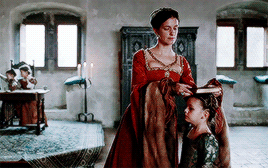
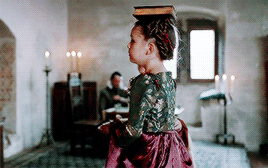
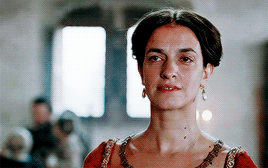
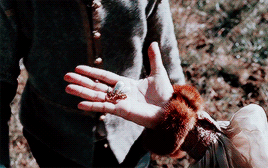



✧ Mary became Queen of Scotland at just six-days old and spent the first five and a half years of her life, under the close care of her doting mother Marie. In 1548, in response to the ‘rough whooing’, Marie arranged a betrothal between her daughter and the Dauphin of France, to strengthen ties and allow Mary to escape from the unrest surrounding her. Six-years later in 1554, Marie was named Queen Regent of Scotland. With an absent monarch, Marie was a new type of regent, a permanent ruler on her daughter’s behalf. For six years she kept the country free from English rule and preserved the crown for Mary. When she died in 1560, Mary fell into a deep depression; the Venetian ambassador wrote: "imagine the regret (...) of the most Christian Queen who lover her mother incredibly, and much more than daughters usually love their mothers." Following Mary’s own death in 1587, one of her most precious belongings was discovered to be a miniature of Marie; this leaves a touching end to her difficult life—a life her mother fought so hard for.
Marie of Guise and Mary I of Scotland in Mary, Queen of Scots (2013)
#historyedit#marystuartedit#perioddramaedit#mqosedit#scotlandsladies#mary queen of scots#mary of guise#mary i of scotland#marie of guise#mary queen of scots 2013#history#16th century#early modern history#scottish history#queens#period drama#our gifs#our creations#<3
377 notes
·
View notes
Quote
While savagely attacking Marie of Guise, the regent of Scotland, and her daughter Mary Stuart, the queen regnant, Knox also conveniently overlooked the regency of Margaret Tudor, Mary Stuart’s grandmother. Born on 28 November 1489, Margaret was the eldest daughter of Henry VII and Elizabeth of York, four years younger than their son and heir Arthur. Her grandmother Margaret Beaufort was present at her birth and supervised her granddaughter’s education; though the English princess was, as her biographer Hester Chapman notes, “more carefully educated than most princesses of her day,” Margaret Beaufort could not interest her namesake “in the intellectual projects for which she herself became celebrated.” By 1496 the English king was engaged in negotiations to arrange for the marriage of his first-born daughter.
The Monstrous Regiment of Women: Female Rulers in Early Modern Europe by Sharon L. Jansen, 2002.
73 notes
·
View notes
Photo


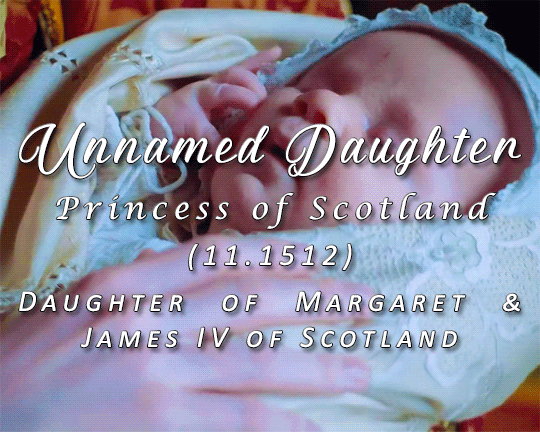

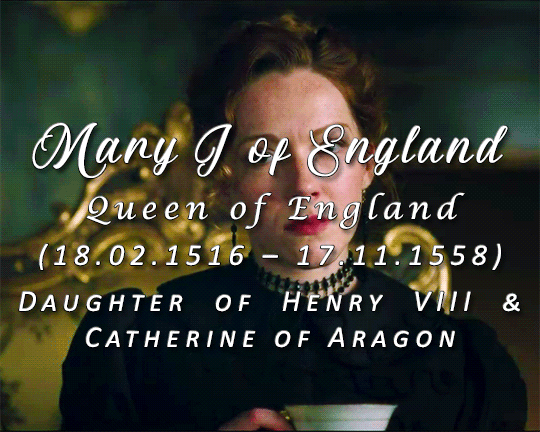
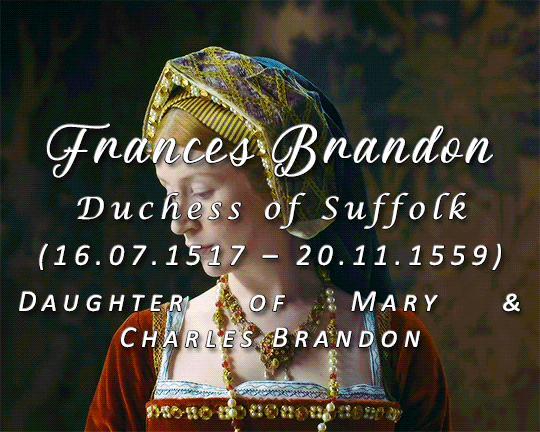


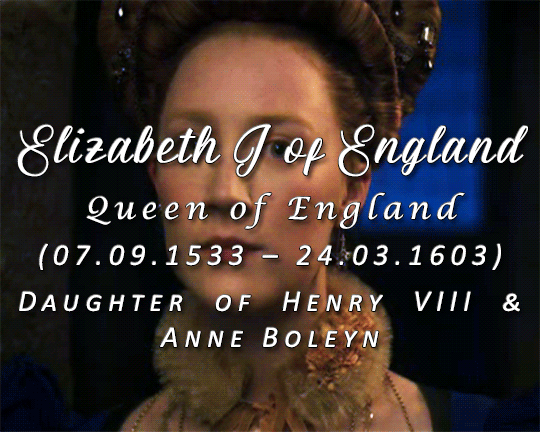
the granddaughters of elizabeth of york and henry vii of england
#historyedit#perioddramaedit#scotlandsladies#royaltyedit#history#elizabeth of york#Margaret Tudor#Mary Tudor#catherine of aragon#anne boleyn#Margaret Douglas#mary i#frances brandon#eleanor brandon#elizabeth I#our edits#by nadz#16th century#frances grey#eleanor clifford#english history#Scottish history#gif
375 notes
·
View notes
Photo
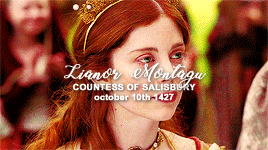
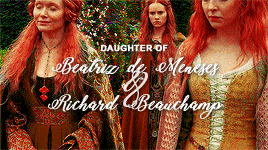


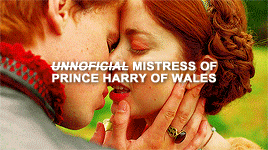

crowns’ history meme -- (01/??) : lianor montagu, countess of salisbury
lianor montagu, countess of salisbury (neé beauchamp; 10 october 1427 -- ??) was an english noblewoman living at the court of king edward of england. she was the eldest daughter of beatriz de meneses, a portuguese lady in waiting and long-time friend of queen eleanor of england. like her mother, she joined the princess of wales’ household whilst still a child and was raised alongside the plantagenet children on the royal nursery at ludlow castle, wales. on 1499, she became the second wife of thomas montagu, 6th earl of salisbury, with whom she had issue.
recent interest has sparked on uncovering her part on the english court due to her extensive affair with the then prince of wales, henry plantagenet, who many historians argue to be the true father of her children.
inspirations were taken from history edits around tumblr, particularly from scotlandsladies & sansaregina’s gifset series.
#crhs.graphics#chm#— ( 𝖕𝖔𝖗𝖙𝖗𝖆𝖎𝖙𝖘 ) 🍎 𝘩𝑒𝑟 𝑎𝑙𝑜𝑜𝑓 𝑓𝑖𝑛𝑒𝑙𝑦 𝑐𝘩𝑖𝑠𝑒𝑙𝑒𝑑 𝑓𝑒𝑎𝑡𝑢𝑟𝑒𝑠.#i intend to make one for each character but ya know me with my slug speed uwu#appreciate my pretty baby
12 notes
·
View notes
Note
Hey! I was wondering if you would mind to recommend some good history/classics blogs that don’t post really colourful content? My dash is currently dead and I’d love to know some of your favs because your blog is amazing!
hey! so off the top of my head i actually can’t think of any pale themed history blogs? sorry! but instead though, i went through my blogroll and i’ll recommend some blogs that i like (that post 70%+ history) and you can go through them and see if any of them are good for you! :) also check out the #historyedit tag bc there’s usually new content there everyday!
individual blogs: @historixn, @lochiels, @annaboleyne, @cleopatrasdaughter, @thoodleoo, @clodiuspulcher, @its-caesar-bitch, ((also bonus @katiemcgrath - not exclusively a history blog, but they make stunning history edits sometimes, so keep an eye out for them!))
resource/networks: @historynetwork, @historicwomendaily, @scotlandsladies, @frenchladiesdaily, @ottomanladies, @archaeologicalnews, @museum-of-artifacts, @makingqueerhistory,
4 notes
·
View notes
Note
Hi! I really like your reply to that anon about TSP and Margaret and James IV as a couple, but when I read that you're now interested in reading about them and the Stuart dynasty, all I could think about was the monarchs/family from James VI/I onwards lol. Any monarch before MQOS, is a member of the Stewart dynasty, not the Stuart dynasty. I'd recommend @scotlandsladies + @the-busy-ghost + @weavingthetapestry for history on the Scottish dynasties before the Stuart dynasty. :) Have a nice day!
Ah thank you so much for your message and have a nice day too 🥰
0 notes
Photo



The Births, ages & deaths of Their Royal Highnesses Children. c. 1677-8
This small notebook records the dates and exact times of the births of seven of the eight children of James, Duke of York and Anne Hyde, including the future queens Mary II and Anne I; their first child, Charles, Duke of Cambridge (1660-1661) is not recorded. The dates and times of the first three children of James and his second wife, Mary of Modena, are also noted. The early deaths of most of James's children, also recorded in the notebook, vividly captures the high infant mortality rate of the seventeenth century. The death of Anne Hyde at the end of March 1671 is documented, together with a note of James's second marriage: 'The Duke was Mar[ried] & Bedded at Dover to ye Princes[s] Mary of Modena on Fryday ye 21st of Nov[ember] 1673'. Opposite, a lock of hair, probably Anne Hyde's, is sewn onto the page.
The notebook was designed for the Duke of York, whose 'JD' monogram appears both on the elaborate binding in gold tooling and on the clasps, and though it is not in his handwriting, the presence of locks of hair implies the compiler was very close to the royal ducal family. It was written in one sitting, probably in late 1677 or early 1678, as it records the death of a second Charles, Duke of Cambridge (7 November 1677 – 12 December 1677) but not the birth of James's next child, Elizabeth, in 1678. It was probably compiled for James's use; clearly it is a highly personal item.
#house of stuart#n: anne hyde#qr: mary ii#qr: anne i#qc: mary of modena#k: james vii#17th century#history#scottish history#british history#ours#scotlandsladies
118 notes
·
View notes
Quote
When Arbella was still a child, her grandmother had promised her to the four-year-old son of Robert Dudley, earl of Leicester, who, perhaps fortunately for Bess of Hardwick, died; the queen had been angered by the proposal and took upon herself the task of arranging Arbella’s future. Elizabeth used Arbella as a “bargaining chip in foreign policy, tantalizing continental nobility with the prospect of marriage accompanied by the declaration of succession.” At various times those prospective alliances included Esmé Stuart, who had inherited Arbella’s Lennox title and lands after her father’s death; the king of Scotland himself, James VI; Rainutio Farnese, the son of the duke of Parma; Henry IV of France; the prince of Condé; and the duke of Nevers. Various alliances with members of the English nobility were also proposed, including Robert Cecil. But none of these marriages ever took place. Arbella came briefly to court in 1587 and again in 1588, but she was sent away in disgrace for some offense. At the time it was rumored, on the one hand, that her presumption had resulted in her dismissal, on the other that a romance with the earl of Essex had precipitated her removal from court. Arbella herself, writing about the incident later, indicated that at first she had enjoyed the queen’s approval. Queen Elizabeth had examined the young woman for herself when she arrived at court and “by trial did pronounce me an eaglet of her own kind . . . worthy . . . even yet to carry her thunderbolt.”
The Monstrous Regiment of Women: Female Rulers in Early Modern Europe by Sharon L. Jansen, 2002.
73 notes
·
View notes
Photo


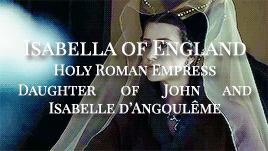
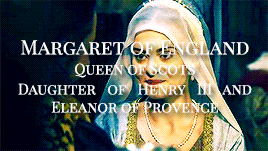



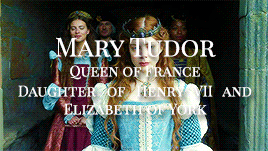

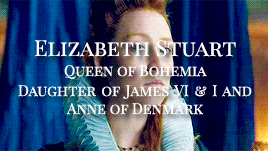
english princesses who became imperial and royal consorts
↳ requested by @queer-devito
#historyedit#perioddramaedit#scotlandsladies#history#english history#scottish history#Empress Matilda#joan of england#eleanor of england#isabella of england#margaret of england#joan of the tower#philippa of lancaster#margaret tudor#mary tudor#mary i#elizabeth stuart#our edits#by nadz#this was only from the conquest up to the union i'm sorry if you wanted more
771 notes
·
View notes
Photo

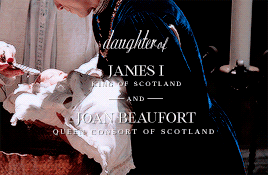
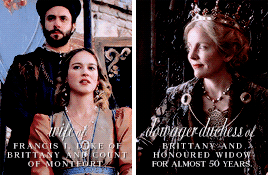



The Ladies ♔ Princesses → Isabella Stewart, Duchess of Brittany (1426 - c.1495/99)
Isabella of Scotland was born in 1426 as the second child and daughter of James I and Joan Beaufort. Although there is no details of her childhood, a report before her marriage describes her as being “a well-brought-up young lady, schooled to silence and submission.” By the age of sixteen she married Francis I, Duke of Brittany in front of Bretons and Scottish nobles on 30th October 1442. The marriage appears to have been cordial and the couple had two daughters. In 1450 Francis died and Isabella was pressured by her younger brother James II to return to Scotland, where he had hoped to arrange a second marriage for her. However, Isabella refused, claiming that she was happy and popular in Brittany; along with being too frail to travel. It was more than forty years later, when Isabella died as early as 1495 and as late as 1499, and lived long enough to see the reign of her grandnephew James IV. She was either buried in Nantes or Vannes.
“In both piety and patronages, she could be matched by others in her world. Her life is of interest, nevertheless, because it provides precious evidence of the tastes of one particular woman, shaped by current fashion in devotion. Beneath the splendid trappings and ceremonial routine appropriate for her rank, Isabella attempted an internal pilgrimage as a private soul, a day by day progress on a path to spiritual enlightenment.” — Elizabeth Ewan and Maureen M. Meikle (editors), Women in Scotland c.1100 - c.1750
#historyedit#isabella stewart duchess of brittany#house of stewart#scottish history#history#isabella of scotland#breton history#house of montfort#p: isabella duchess of brittany#princesses#scotlandsladies#k: james i#qc: joan beaufort#medieval history#15th century#*princesses#kingdom of scotland#ours#gifs
202 notes
·
View notes
Photo
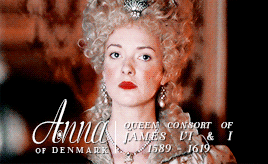


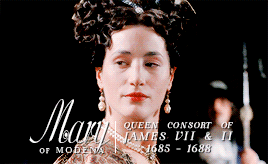

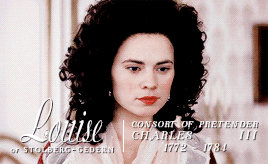
Queen Consorts of Scotland ♕ House of Stuart (1542–1649, restored 1660–1707)
(includes Consorts of Jacobite Pretenders from 1689–1788)
#house of stuart#historyedit#anne of denmark#henrietta maria of france#catherine of braganza#mary of modena#jacobite history#scottish history#queen consorts#history#scotlandsladies#qc: anne of denmark#qc: henrietta maria of france#qc: catherine of braganza#qc: mary of modena#c: maria clementina sobieska#c: louise of stolberg gedern#qc houses#gifs#ours
265 notes
·
View notes
Quote
“The women are courteous in the extreme. I mention this because they are really honest, though very bold. They are absolute mistresses of their houses, and even of their husbands, in all things concerning the administration of their property, income as well as expenditure. They are very graceful and handsome women. They dress much better than here (England), and especially as regards the head-dress, which is, I think, the handsomest in the world.”
— Don Pedro de Ayala, the Spanish ambassador at James IV's court.
#historicalquotes#scottish history#history#scotland#don pedro de ayala#james iv#15th century#scotlandsladies#ours#quotes#*quotes
159 notes
·
View notes
Photo

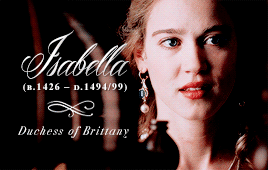


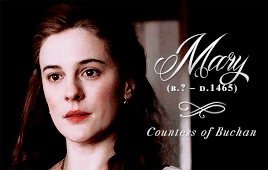

♕ Daughters of James I of Scotland and Joan Beaufort (requested by anonymous)
#historyedit#scottish history#kingdom of scotland#margaret stewart dauphine of france#isabella stewart duchess of brittany#eleanor stewart archduchess of austria#joan beaufort#james i#p: margaret dauphine of france#p: isabella duchess of brittany#p: joan countess of morton#p: eleanor archduchess of austria#p: mary countess of buchan#p: annabella countess of geneva#ours#princesses#house of stewart#gifs#scotlandsladies#requests
253 notes
·
View notes